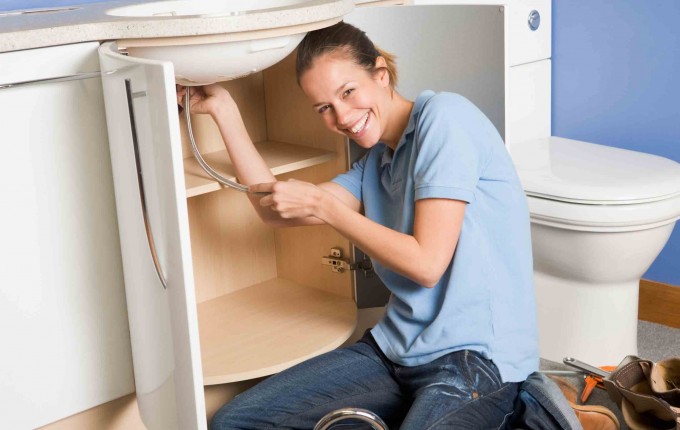4 Simple Winter Home Projects That Can Save You Money

Once again, it’s the time of year to start winterizing your home. You’re probably dreading the steep rise of your energy bill from heating and searching for ways to prepare for the long, cold, winter months soon to arrive. Don’t worry! We’ve found five easy (Yeah, we added one more!) home projects for winter that can help save you money and energy!
Seal Pesky Drafts
There are two main ways to seal drafts in your walls or windows and doors: weatherstripping and caulking. Weather stripping is for movable components like doors and windows while caulking is for stationary components like faucets, ceiling fixtures, and electrical outlets.
First, take the time to find all the air leaks in your home. One way to test doors and windows is to stand on the inside with a lit candle and have another person stand on the other side of the door or window with a blow dryer. If the candle goes or quavers a lot, then you know you have an air leak! Once you’ve identified where all your air leaks are, follow these guides for each part of your home:
- Step-by-step guide for weather stripping different windows by Lowe’s
- This very informative and extensive guide on how to weather strip your doors
- The U.S. Department of Energy writes all about caulking, from selecting the right type to applying it.
Invest in Energy Smart Light Bulbs
One of the easiest home projects for the winter is to change out your old light bulbs to “smart” efficient LED light bulbs. Using your phone or tablet you can control the light bulb settings while using minimal energy. The initial cost is high, however, they are well worth the investment because the lifespan is significantly longer – up to 20 years – and uses far less energy than incandescent light bulbs. Compact Fluorescent Lights, CFLs, are a cheaper option and have similar energy savings to LED light bulbs, though they probably won’t last as long.
Reverse Your Ceiling Fan
This is a simple house hack that doesn’t cost anything and can save up to 10% on heating costs. All you have to do is reverse the ceiling fan rotation to be clockwise during the winter. This causes warm air near the ceiling to be pushed down into the room. “Hot air rises,” but that doesn’t mean you have to leave it there since your family spends very little time on the ceiling! Make sure to remember clockwise for winter and counterclockwise for summer.
Prevent Frozen Pipes
Having your pipes freeze, burst, and flood your house is one of the worst things to happen during the winter. Not only is it a huge mess to clean up, but it’s also very costly to fix. Before the temperatures drop extremely low, it’s better to take the time to insulate exposed pipes and cover outside faucets.
- First, disconnect the garden hose from the outdoor faucet or spigot and place an insulating dome on it. This helps reduce the chances of water pipes freezing, expanding, and causing a costly leak.
- Also, find any exposed pipes and insulate them with round foam pipe insulation or use heat tape that will turn on at certain minimum temperatures to protect your pipes.
- Finally, allow a slow drip from your inside faucets to reduce the buildup of pressure in the pipes when the temperature is less than 20 degrees for an extended period of time.
Install a Smart Thermostat
Invest in a smart or programmable thermostat that can control the heating and cooling of your house. Through a smartphone or tablet, you can adjust and set the house temperature. Although it is quite a big investment up front, it is definitely money well spent in the long run for energy efficiency and significantly lowered heating bills. Programmable thermostats come in a variety of price ranges and styles to fit your needs and budget.
Stay cozy this winter with these five easy home projects and check out our blog for more home projects and tips!



